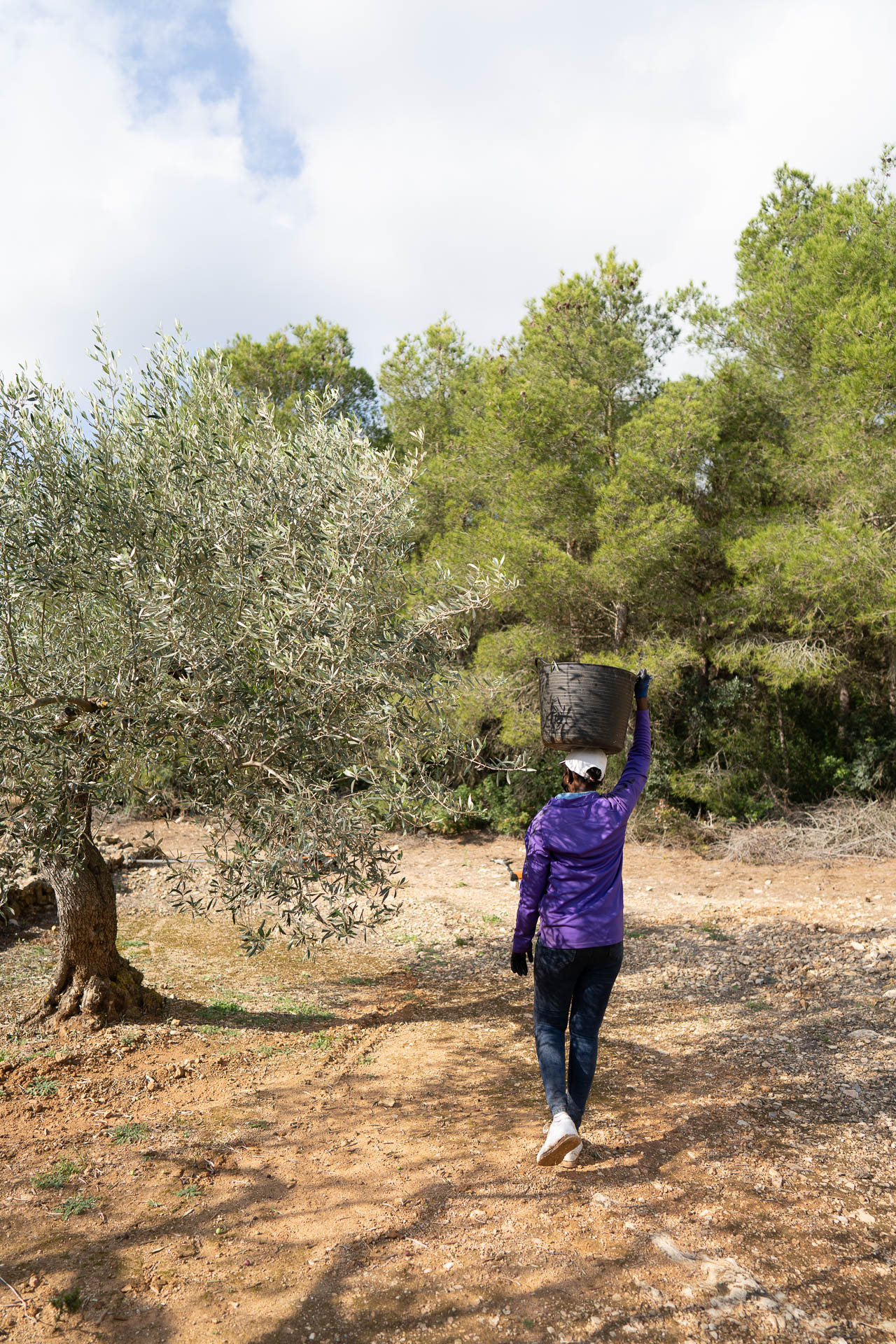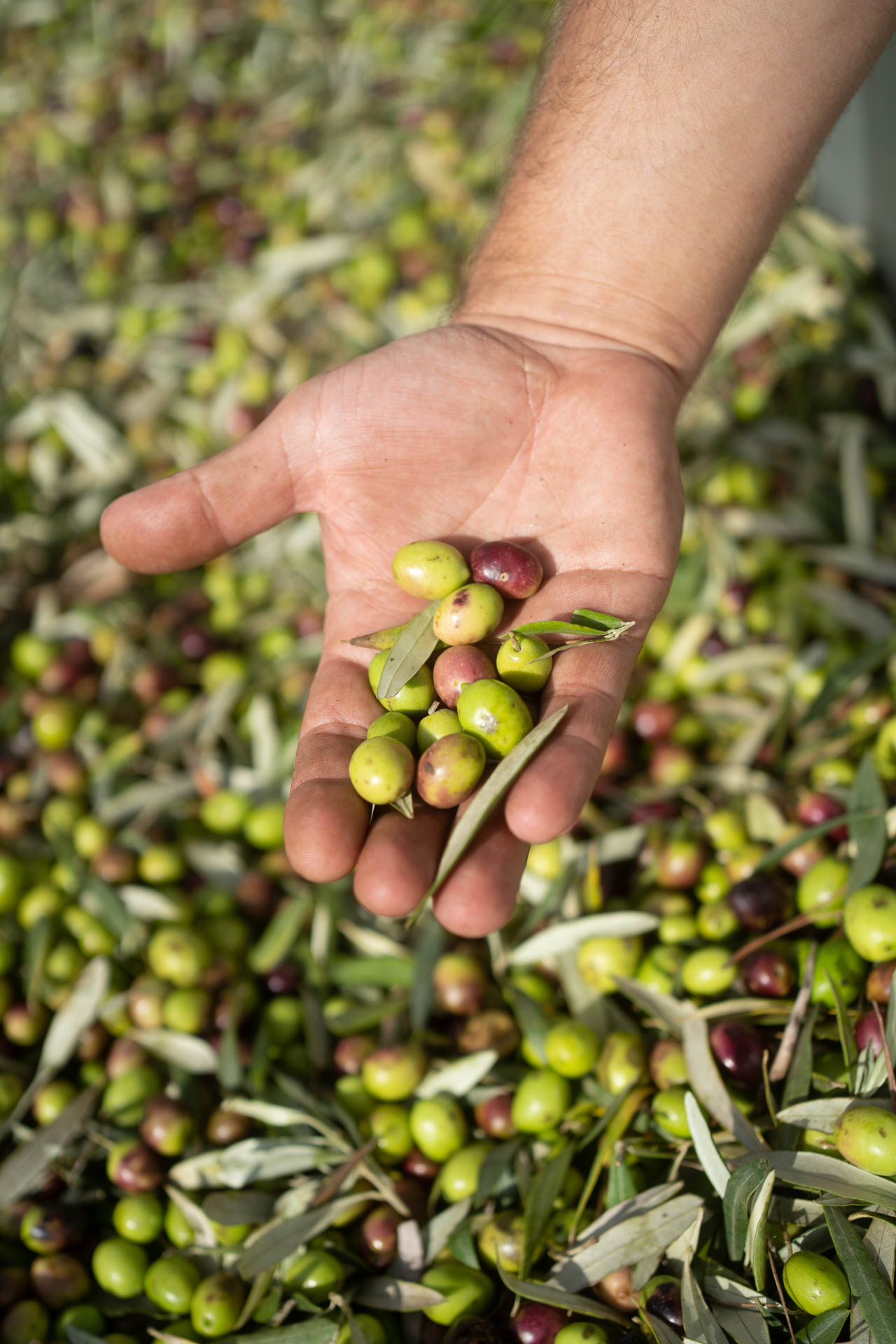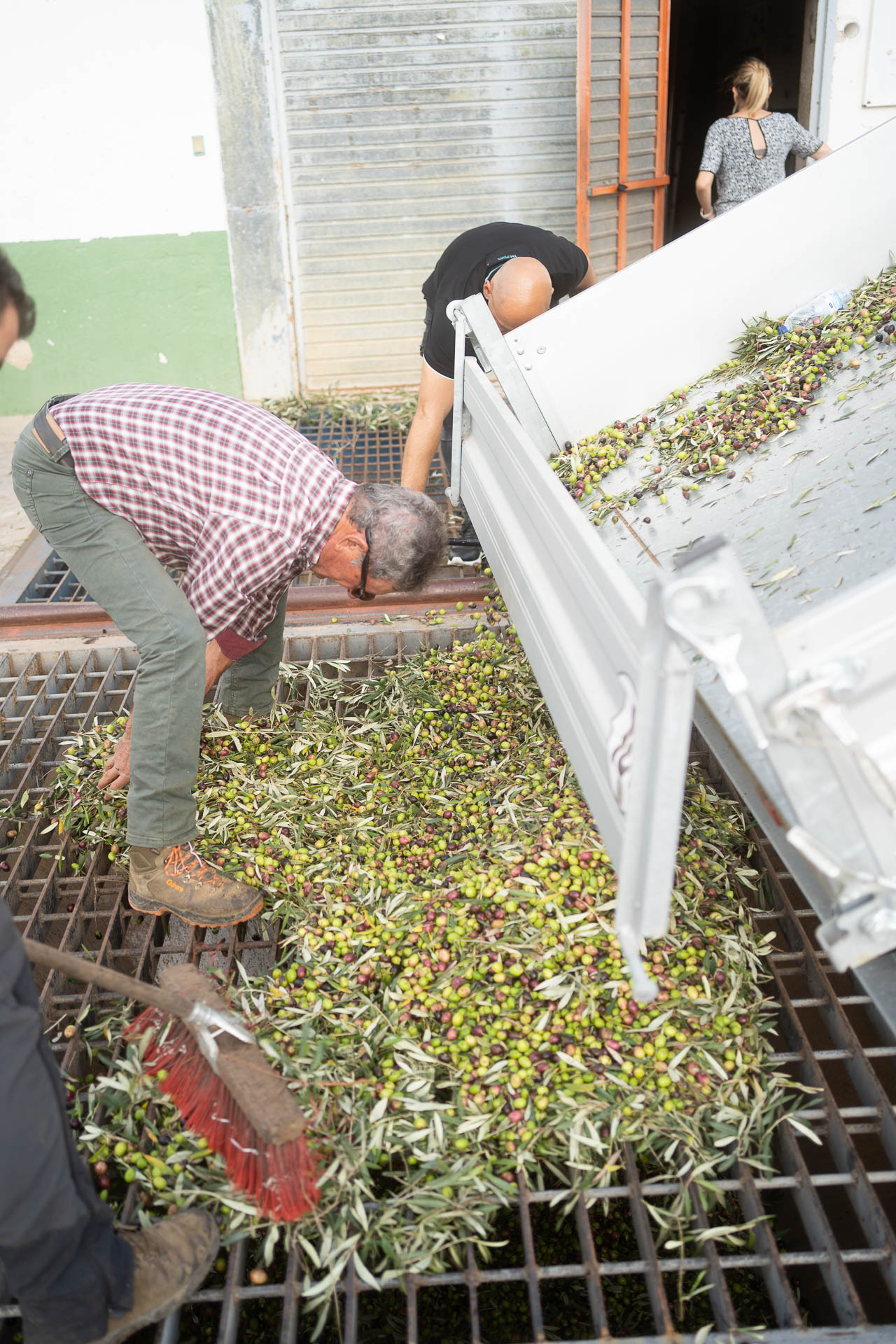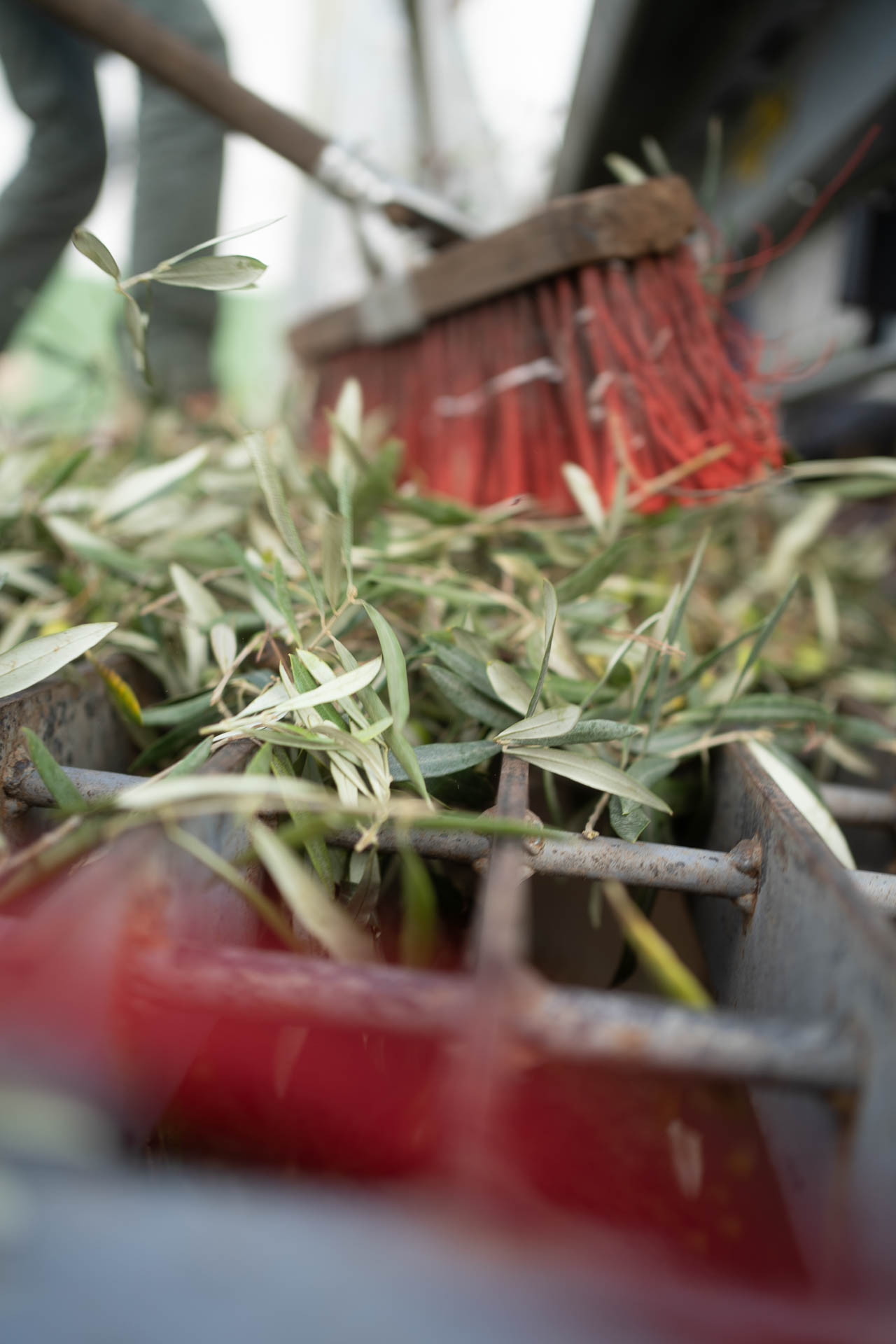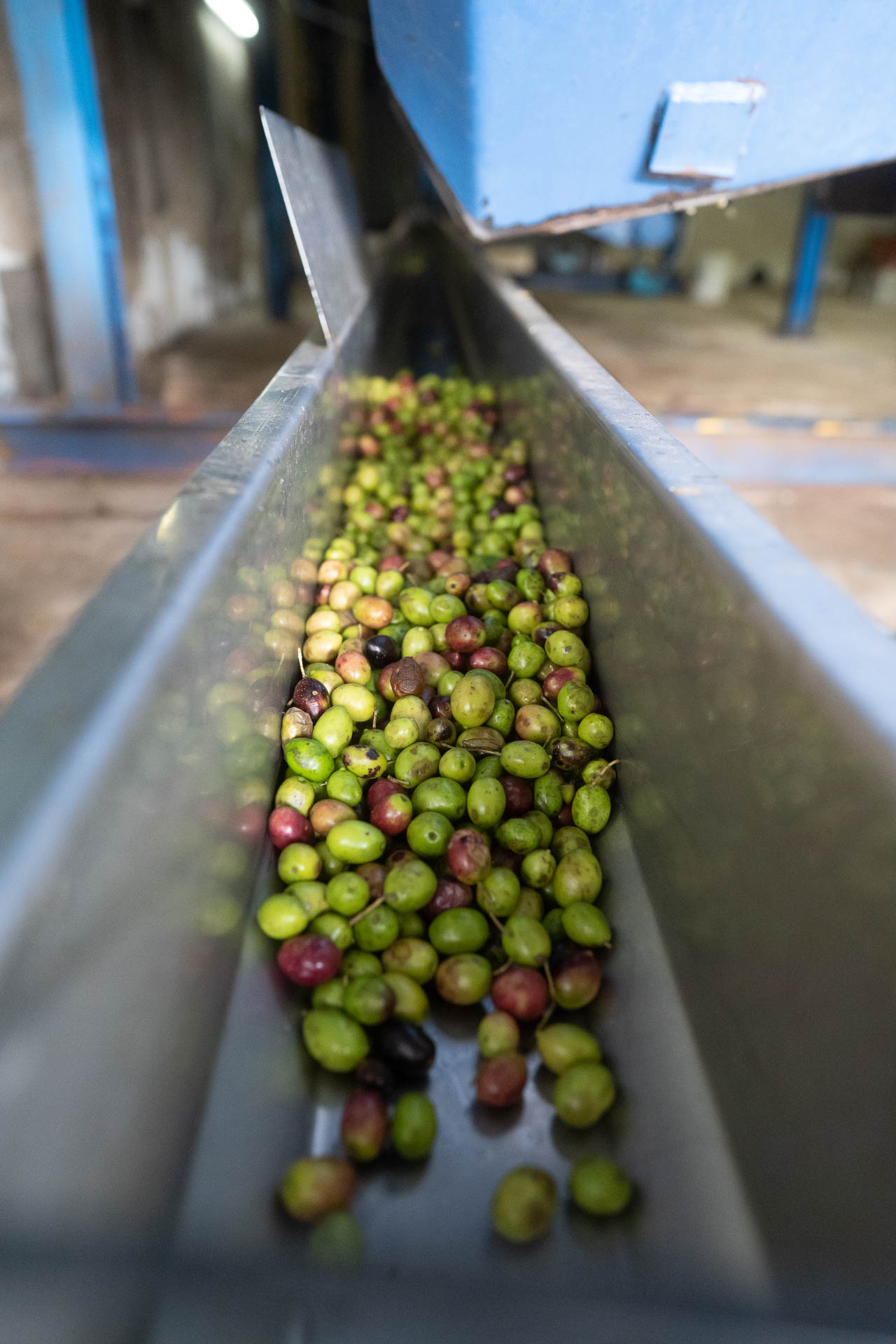Harvest
Here you can find all information about our olive harvest
This is how our olive oil is made
The olive harvest in Spain is a time-honored tradition, rich in history and full of flavor. From the rolling hills of Andalusia to the terraced groves of Catalonia, the landscape comes to life with the sights and sounds of harvest season. When the sun shines and the warm Mediterranean breeze blows, our harvest workers pick the ripe olives by hand and fill the baskets to the brim with our precious olives. The scent of freshly picked olives fills the air and mixes with the scent of the sea and the warmth of the sun. The fruit is then taken to the local squeezer where it is carefully cold pressed to extract the rich, golden oil. This oil, with its delicate flavor and health-promoting properties, is an essential part of Spanish cuisine and a symbol of the country’s proud agricultural heritage. So next time you enjoy the taste of Spanish olive oil, take a moment to appreciate the hard work and passion that goes into every single drop.
Below you can learn more about the individual steps of our harvest.
October
From mid-October we start harvesting our olives. The weather made a good impression this year and we are looking forward to a plentiful selection.
We are currently in the preparation phase.
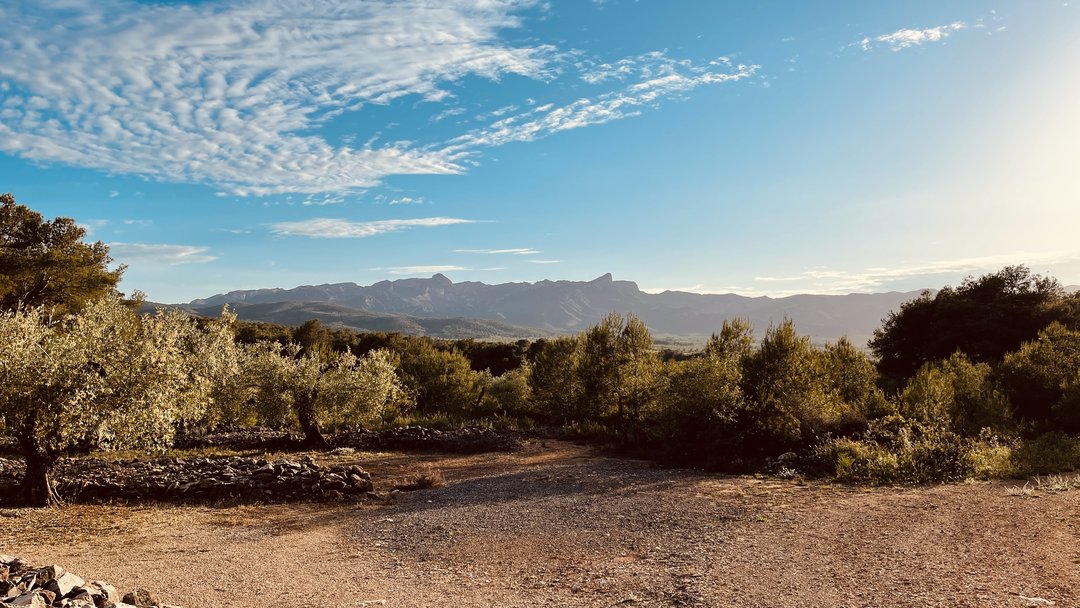
November
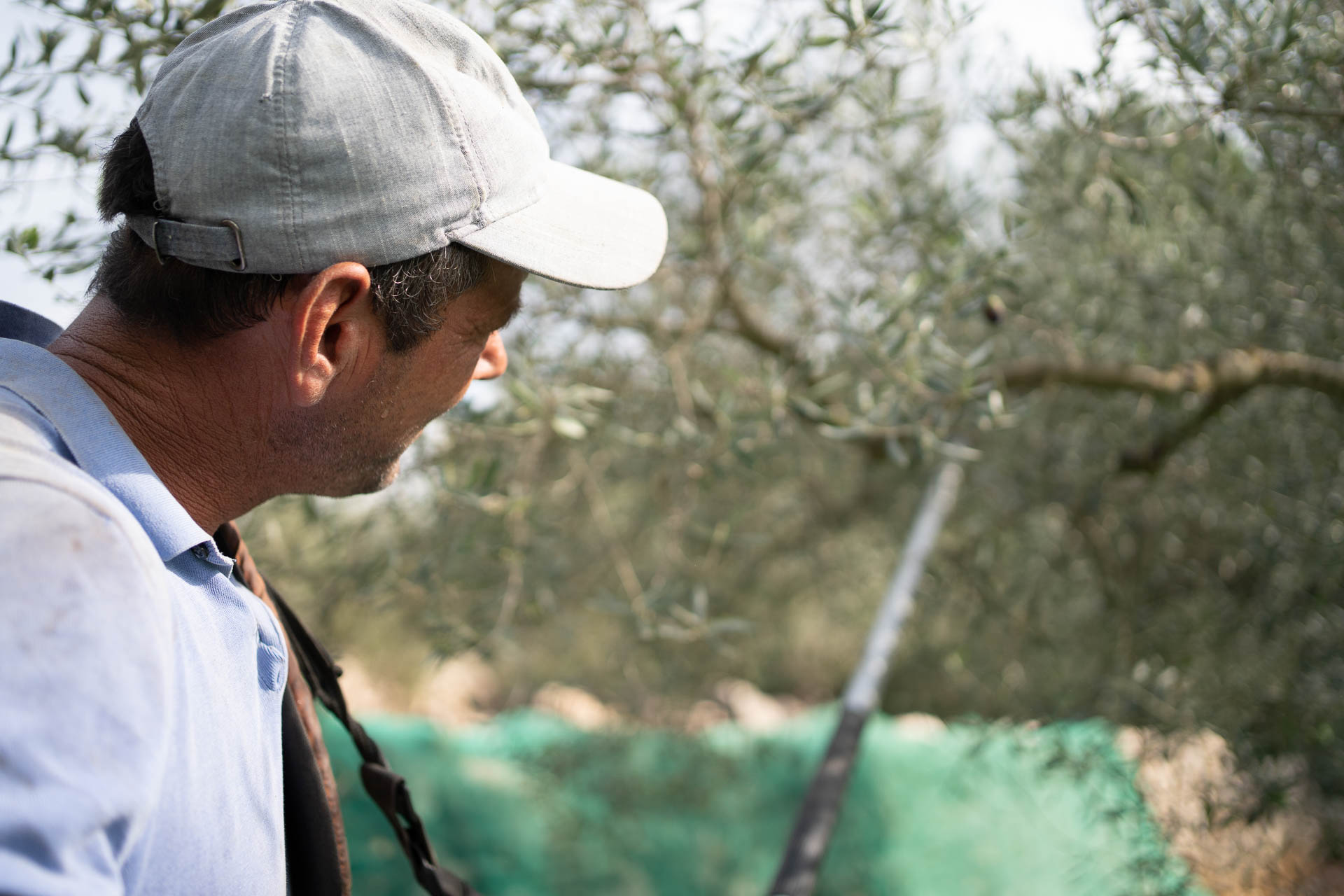
We are currently in the harvest phase and have almost finished picking the olives.
We have brought a few pictures for you to give you an impression of how a harvest works here.
We only harvest between 8 a.m. and 6 p.m. in order not to endanger the animals that spend the night in our olive grove.
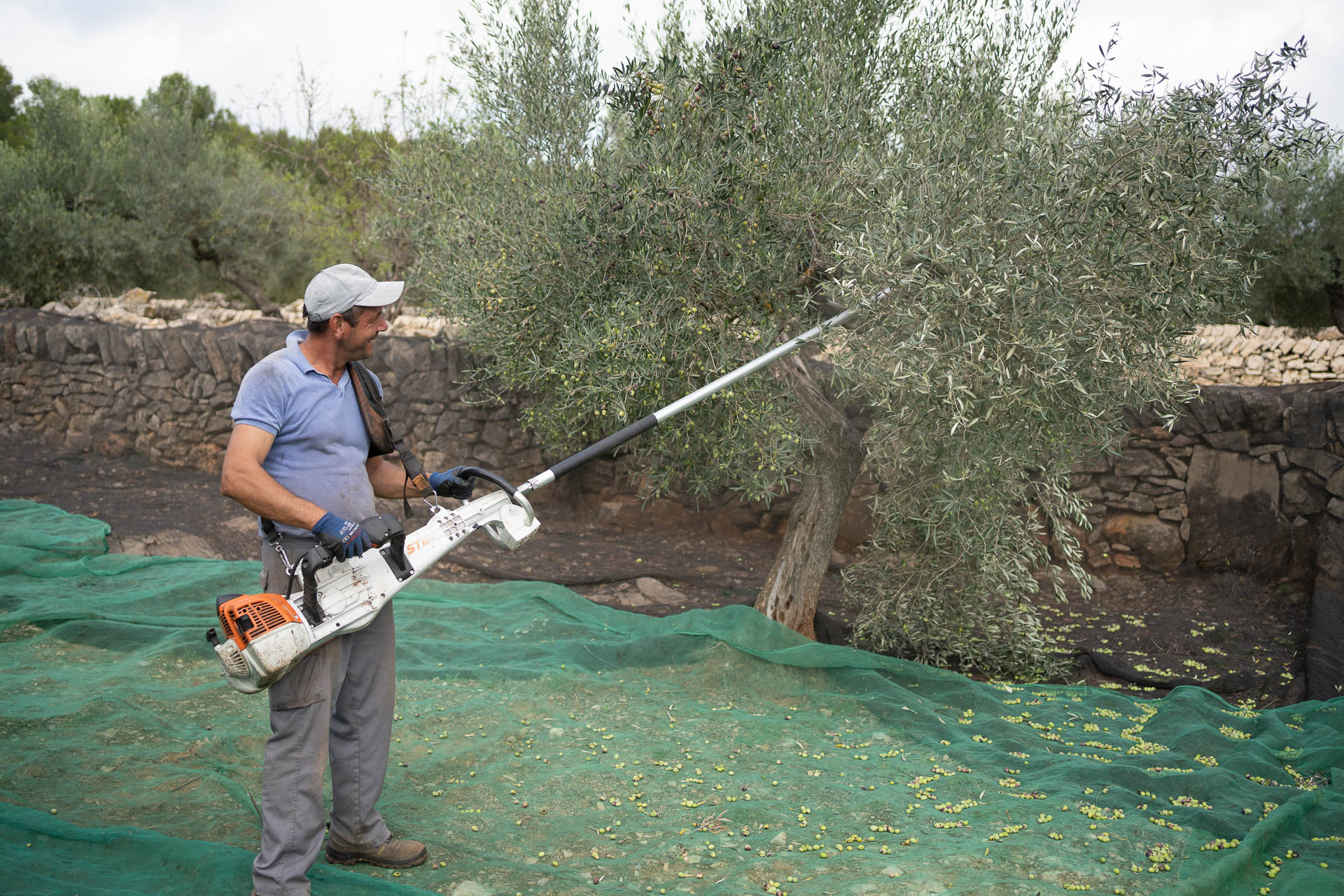
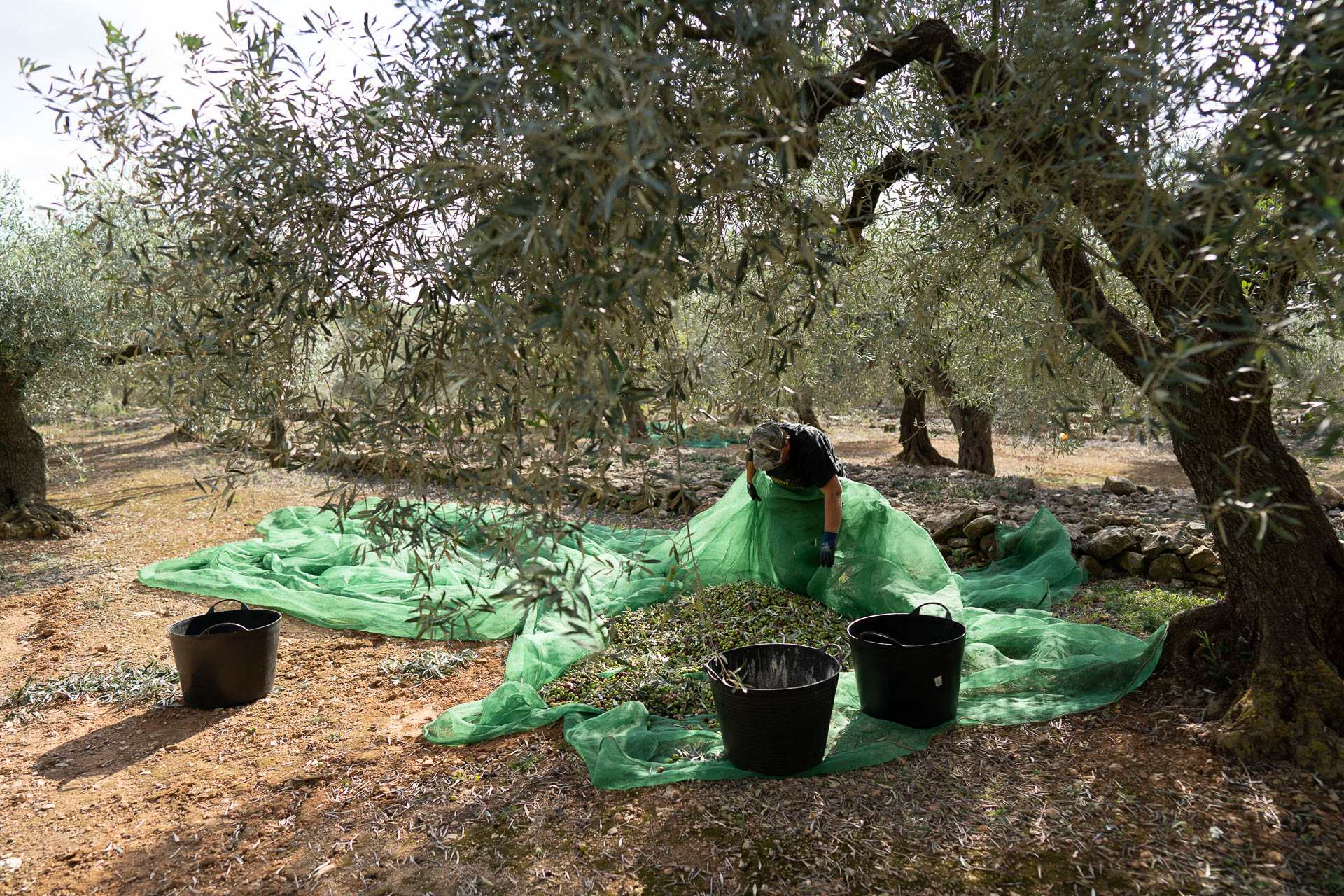
December
The harvest was a complete success. Many thanks to all the hard-working helpers.
This year we had perfect climatic conditions and managed our entire olive grove in four days. Our fields are home to the two olive varieties Salivenques and Reguers, which have been traditionally grown in this region for several 100 years.
The first bottles are already being filled and will then be shipped immediately.
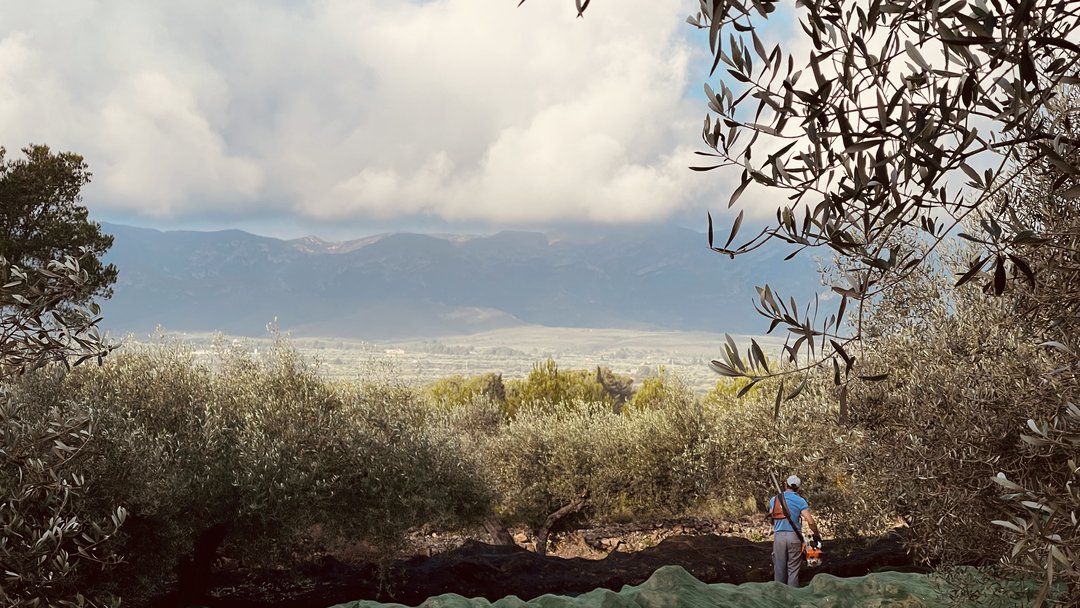
January
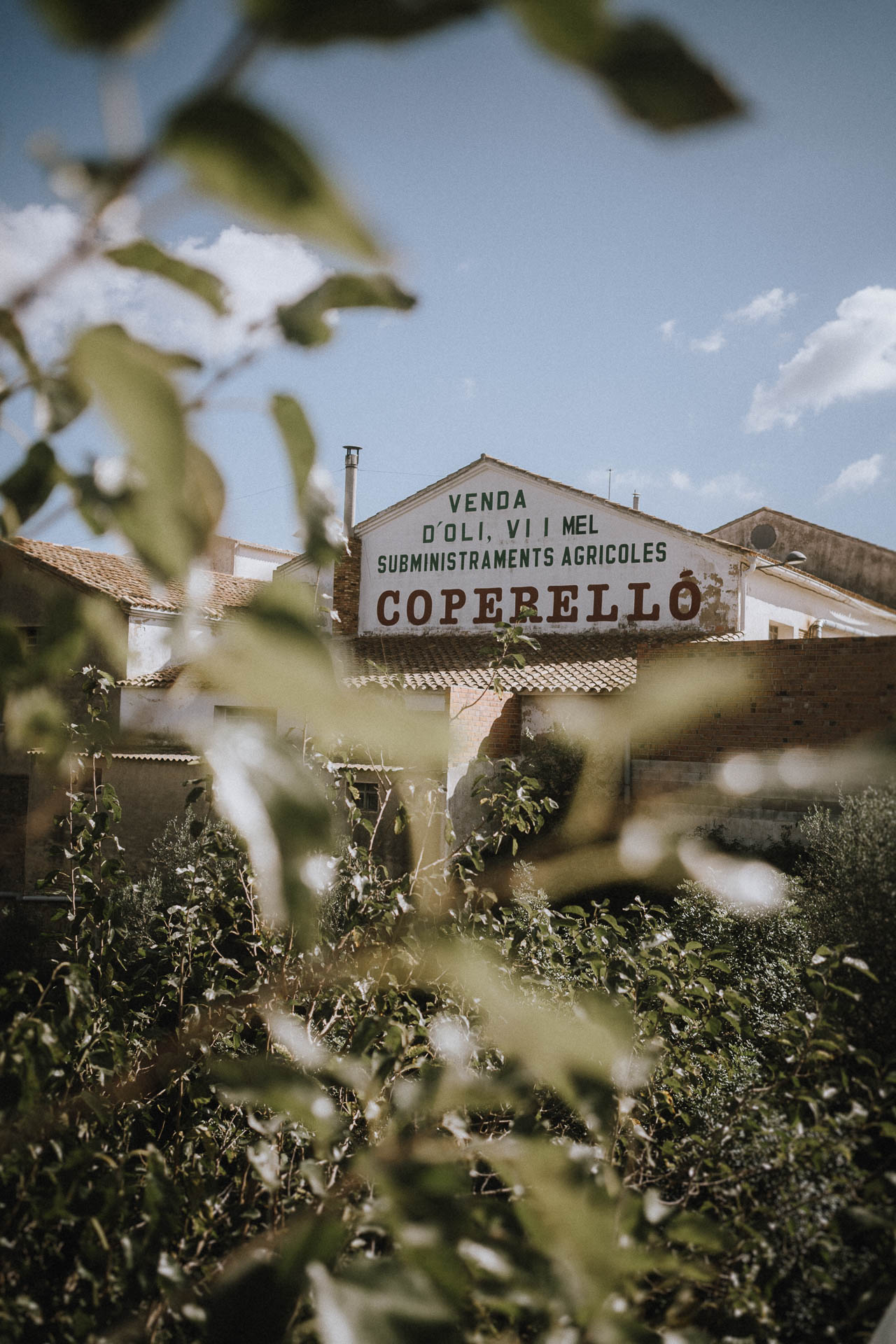
As already mentioned, we only harvest between 8 a.m. and 6 p.m. in order not to endanger the animals that spend the night in our olive grove. Industrially operated mega plantations harvest 24 hours a day. Unfortunately, thousands of birds that seek shelter in the olive trees at night die.
The Ebro Delta is also in our immediate vicinity. It lies at the mouth of the Ebro River directly on the Mediterranean and is the second largest wetland in Spain. The area is 320 square kilometers in size and is mainly used for rice cultivation by the approximately 50,000 residents. However, the entire river delta with its beaches, lagoons, wetlands and swamps is also a species-rich breeding and resting area for many bird species and is internationally considered a biodiversity hotspot. Numerous migratory birds from Northern Europe spend the winter here. More than 300 native bird species, including ducks, herons, wading birds and flamingos, breed in the delta and find enough food in the months of September and October, after the rice harvest. We see it as our duty to protect local biodiversity.
